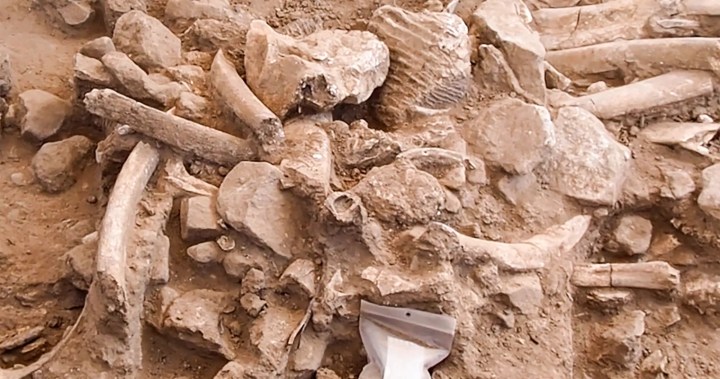
Mammoth bones, ‘ghost’ footprints: Did humans arrive in North America much earlier than we thought?
Global News
A scientific debate about when humans arrived in North America is heating up thanks to two recent discoveries in New Mexico and Utah.
Recent discoveries of mammoth bones and “ghost” footprints left behind by ancient peoples are adding fuel to a scientific debate over whether the first humans to reach North America may have come much earlier than previously thought.
Scientists generally agree that the first people to live in what is now Canada and the United States arrived around 10,000 to 15,000 years ago and may have walked from Asia over a “land bridge” that covered the Bering Strait. But these new discoveries have been dated much earlier than 10,000 years ago, calling into question this timeline of human migration to North America.
In a study published on July 7, researchers detailed the discovery of two mammoth fossils, a mother and her calf, found in New Mexico. The bones have been radiocarbon dated to around 37,000 years ago and patterns of fractures on the bones show evidence that humans may have butchered them for meat.
The fossils were found on rocks high above a tributary to the Rio Grande in what is now called the Hartley site. Bone markings appear to show where humans chopped meat and placed puncture marks to drain grease from ribs and vertebral bones. A high number of bone flakes, which is characteristic of butchering, were also found.
A chemical analysis of sediment around the bones showed fire particles that came from a sustained and controlled burn, unlikely to have been caused by nature. The material also contained bone fragments and the remains of fish and small animals, despite the site being 60 metres away from the closest river.
An article by the University of Texas (UT) calls the find “some of the most conclusive evidence for humans settling in North America much earlier than conventionally thought.”
“What we’ve got is amazing,” said lead author Timothy Rowe, a paleontologist and a professor at the UT Jackson School of Geosciences. “It’s not a charismatic site with a beautiful skeleton laid out on its side. It’s all busted up. But that’s what the story is.”
But not everyone in the scientific community is so thrilled with Rowe’s conclusions.











